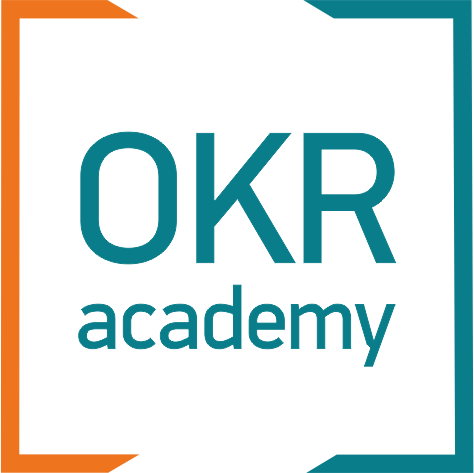OKR Methodology
How We Conduct OKR Planning Sessions at OKR Academy
In this article, I detail the processes our team at OKR Academy uses to conduct OKR planning sessions. Our approach not only ensures a quality outcome for the session but also creates an engaging and enjoyable experience for all teams involved.
Three Principles:
During OKR planning, I have the flexibility to alter tools and steps; however, I consistently adhere to three critical principles:
During OKR planning, I have the flexibility to alter tools and steps; however, I consistently adhere to three critical principles:
- Strong alignment with strategic or annual goals, focusing on significant upcoming events.
- Encouragement of open brainstorming, free from restrictive wording rules and judgment of ideas.
- Inclusion of every participant to contribute to the ideation, focus selection, and OKR articulation.
Step 0: Preparation.
The planning session begins with preparation. It's essential to determine the list of participants invited to the session. I generally aim for a "reasonable" number of participants, usually between 8-16 people, although there are exceptions (as shared in this article where I facilitated a session for 90 top managers).
If it's a company-wide planning session, the participation of the CEO, top managers, and, if possible, department heads—especially those who will be deeply involved in setting OKRs or supporting the process—is essential. For smaller companies, key specialists are also invited. The more participants involved in setting first-level goals, the easier the subsequent alignment process.
After identifying participants, we ensure everyone can dedicate at least four hours to the planning session, provided it's not their first. For newcomers to OKR, the session is combined with training, lasting from one to two days.
We then review retrospective results and transfer necessary data into the planning space (using an online board or large printouts). Notably, even in face-to-face sessions, combining traditional stickers and flip charts with an online board like Miro, especially with new AI capabilities, is beneficial.
The planning session begins with preparation. It's essential to determine the list of participants invited to the session. I generally aim for a "reasonable" number of participants, usually between 8-16 people, although there are exceptions (as shared in this article where I facilitated a session for 90 top managers).
If it's a company-wide planning session, the participation of the CEO, top managers, and, if possible, department heads—especially those who will be deeply involved in setting OKRs or supporting the process—is essential. For smaller companies, key specialists are also invited. The more participants involved in setting first-level goals, the easier the subsequent alignment process.
After identifying participants, we ensure everyone can dedicate at least four hours to the planning session, provided it's not their first. For newcomers to OKR, the session is combined with training, lasting from one to two days.
We then review retrospective results and transfer necessary data into the planning space (using an online board or large printouts). Notably, even in face-to-face sessions, combining traditional stickers and flip charts with an online board like Miro, especially with new AI capabilities, is beneficial.
Step 1: Context Introduction.
We start the session with traditional greetings and check-ins, followed by a reminder of the strategy, long-term goals, annual goals, and higher-level OKRs, if available. Participants then share information on significant changes expected in the world, industry, or technology that are crucial for deciding on priority changes in the company for the upcoming period (typically a quarter).
We start the session with traditional greetings and check-ins, followed by a reminder of the strategy, long-term goals, annual goals, and higher-level OKRs, if available. Participants then share information on significant changes expected in the world, industry, or technology that are crucial for deciding on priority changes in the company for the upcoming period (typically a quarter).

Step 2: Brainstorming.
The main brainstorming question is, "Where should we focus our efforts in order to successfully reach our strategic goals?" This may be supplemented to stimulate more ideas: "What are the growth drivers, and what are the biggest bottlenecks that we need to eliminate?"
Participants write down any ideas that come to mind in response to these questions on stickers without criticism or attempts to "phrase it correctly."
It's useful to consider different types of thinking—some need to think quietly and write down their thoughts, while others think best through discussion. Combining both methods, we first have participants work in small groups of 4-6 people, initially writing ideas on 3-4 stickers without discussion, and then sharing and grouping similar ideas together. New ideas often emerge during these discussions!
The main brainstorming question is, "Where should we focus our efforts in order to successfully reach our strategic goals?" This may be supplemented to stimulate more ideas: "What are the growth drivers, and what are the biggest bottlenecks that we need to eliminate?"
Participants write down any ideas that come to mind in response to these questions on stickers without criticism or attempts to "phrase it correctly."
It's useful to consider different types of thinking—some need to think quietly and write down their thoughts, while others think best through discussion. Combining both methods, we first have participants work in small groups of 4-6 people, initially writing ideas on 3-4 stickers without discussion, and then sharing and grouping similar ideas together. New ideas often emerge during these discussions!
Step 3: The First Filter - Change or Run?
It's important to note that OKRs are tools for implementing strategic changes, not for managing routine activities. Thus, routine tasks, while important, are not included in OKRs. At this stage, I ask teams to sift through their ideas using this filter, focusing only on Change (sometimes differentiating between Change and Disrupt, or Easy Change - Hard Change).
It's important to note that OKRs are tools for implementing strategic changes, not for managing routine activities. Thus, routine tasks, while important, are not included in OKRs. At this stage, I ask teams to sift through their ideas using this filter, focusing only on Change (sometimes differentiating between Change and Disrupt, or Easy Change - Hard Change).
Step 4: Idea Consolidation.
Once each team has filtered their ideas to include only those related to Change, and the number of ideas has significantly reduced, we proceed to consolidate ideas from all teams, clustering similar ones. We keep similar stickers without removing any because nuances in wording can be useful later. This is often the longest part of the session, but thanks to AI tools like Miro, I can sometimes halve the time by pre-clusterizing with AI and then refining the clusters through group discussion.
(read more in my article "Enhancing Your OKR Planning Session with ChatGPT" )
Once each team has filtered their ideas to include only those related to Change, and the number of ideas has significantly reduced, we proceed to consolidate ideas from all teams, clustering similar ones. We keep similar stickers without removing any because nuances in wording can be useful later. This is often the longest part of the session, but thanks to AI tools like Miro, I can sometimes halve the time by pre-clusterizing with AI and then refining the clusters through group discussion.
(read more in my article "Enhancing Your OKR Planning Session with ChatGPT" )
Step 5: Priority Selection.
If there are more than three clusters, we then select priorities. We discuss selection criteria and use a simple vote with a small group. With a larger group, especially when participants hold different positions, we conduct a team vote with justifications for choosing a particular cluster. The outcome should be 1-3 chosen clusters, which participants will then articulate in the OKR format.
If there are more than three clusters, we then select priorities. We discuss selection criteria and use a simple vote with a small group. With a larger group, especially when participants hold different positions, we conduct a team vote with justifications for choosing a particular cluster. The outcome should be 1-3 chosen clusters, which participants will then articulate in the OKR format.
Step 6: Formulating the Objective.
Only after an hour or more do we proceed to formulate the OKRs! After a brief review of the theory, teams suggest Objective options for each cluster.
Only after an hour or more do we proceed to formulate the OKRs! After a brief review of the theory, teams suggest Objective options for each cluster.
Step 7: Selecting Key Results.
Following a reminder of the principles of Key Results and sometimes a brief game on differentiating output from outcome, teams select the best set of Key Results for each Objective. I organize these stages differently depending on the time available, group size, maturity in OKR, and specifics of the chosen clusters. One approach is a World Café format, where each participant works with every Objective and contributes to selecting Key Results. Another approach is to form working groups with known OKR Owners and have them work autonomously on articulating the OKRs.
(read more about Outputs vs Outcomes in my article "Leading and Lagging Outputs and Outcomes in OKR - What to Choose?" )
Following a reminder of the principles of Key Results and sometimes a brief game on differentiating output from outcome, teams select the best set of Key Results for each Objective. I organize these stages differently depending on the time available, group size, maturity in OKR, and specifics of the chosen clusters. One approach is a World Café format, where each participant works with every Objective and contributes to selecting Key Results. Another approach is to form working groups with known OKR Owners and have them work autonomously on articulating the OKRs.
(read more about Outputs vs Outcomes in my article "Leading and Lagging Outputs and Outcomes in OKR - What to Choose?" )
Step 8: Presentation and Alignment.
Once the OKR formulations are ready, participants present them and check for alignment to ensure the chosen OKRs will genuinely advance toward the annual and strategic goals.
Once the OKR formulations are ready, participants present them and check for alignment to ensure the chosen OKRs will genuinely advance toward the annual and strategic goals.
The session concludes with thanks and well wishes. If this was a goal-setting session at the departmental level, the next separate event would be a session for horizontal alignment, which I will discuss in another article.
